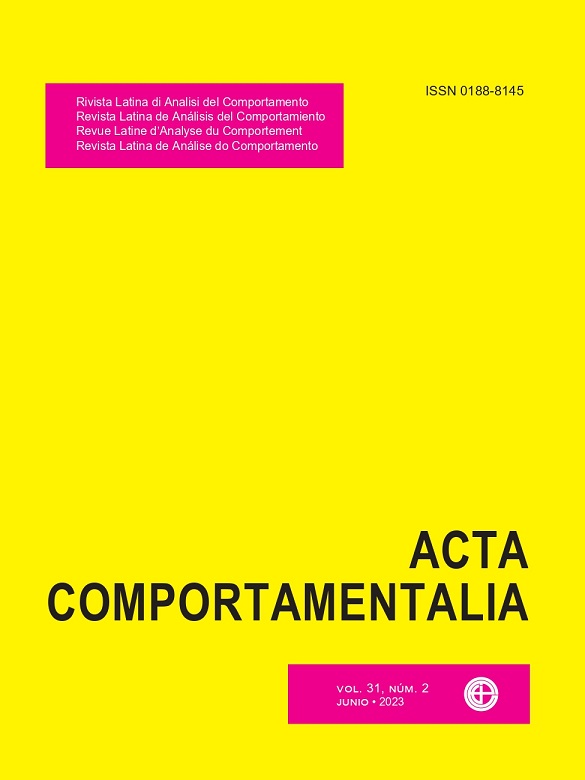Behavioral variability and repetition by young and elderly rats
DOI:
https://doi.org/10.32870/ac.v31i2.85836Keywords:
aging, animal behavior, variability, repetition, extinctionAbstract
The aim of this study was to verify the effects of aging on behavioral variability. Young (4 months) and old (20 months) rats received sucrose (20%) as a contingent reinforcement to the emission of sequences of four pressure responses to two bars, right (D) and left (E). The similarities or differences between the sequences were defined by the allocation of the D or E responses along the sequence, composing 16 possible combinations (DDEE, EDDE, etc.). Depending on the phase of the study, the reinforcement was contingent to any sequence, regardless of which bar was pressed (Lag 0), or depending on its variation (VAR) or repetition (REP) in relation to the previous. In VAR phases, the reinforcement was contingent on the emission of the sequence that differed from one, two or four last internal sequences (Lag 1, Lag 2 and Lag 4, respectively). In in REP phases, only one previously defined sequence was reinforced in 50% of emissions. In the EXT condition, no sequence was followed by reinforcement. Half of the animals (young and old) were exposed to Lag 0 - VAR - ACO - VAR - EXT contingencies and half to Lag 0 - REP - ACO - REP - EXT. Variability was measured by the U statistical index, which could occur on a continuum between 0 and 1, so that 0 indicated the maximum repetition pattern (only one kind of sequence emitted during all the session) and 1 indicated the maximum variations (emission with equal frequency of the 16 sequences throughout the session). They were also recorded the response rates and percentage of reinforcement, in addition to the MetVAR index. The results were surprising in that young rats showed greater “spontaneous” variability under Lag 0 and ACO, but matched older rats under conditions where varying or repeating would produce reinforcement. Therefore, age did not interfere in the learning and maintenance of operant variability and repetition. The extension generated high rates of variation, especially in pre-REP animals. We discuss the influence of higher motor activity in young people and the preference for responses of lower “physical cost” by the elderly on the trend of differences in behavioral variability as a function of age. It is noteworthy that such differences were practically abolished when reinforcement was contingent on specific patterns of variation. These data suggest that some of the behavioral differences attributed to aging may be due to different contingencies of reinforcement available to young and elderly people.
Downloads
Downloads
Published
How to Cite
Issue
Section
License

<a rel="license" href="http://creativecommons.org/licenses/by-nc-sa/4.0/"><img alt="Licencia de Creative Commons" style="border-width:0" src="https://i.creativecommons.org/l/by-nc-sa/4.0/88x31.png" /></a><br />Este obra está bajo una <a rel="license" href="http://creativecommons.org/licenses/by-nc-sa/4.0/">licencia de Creative Commons Reconocimiento-NoComercial-CompartirIgual 4.0 Internacional</a>.






